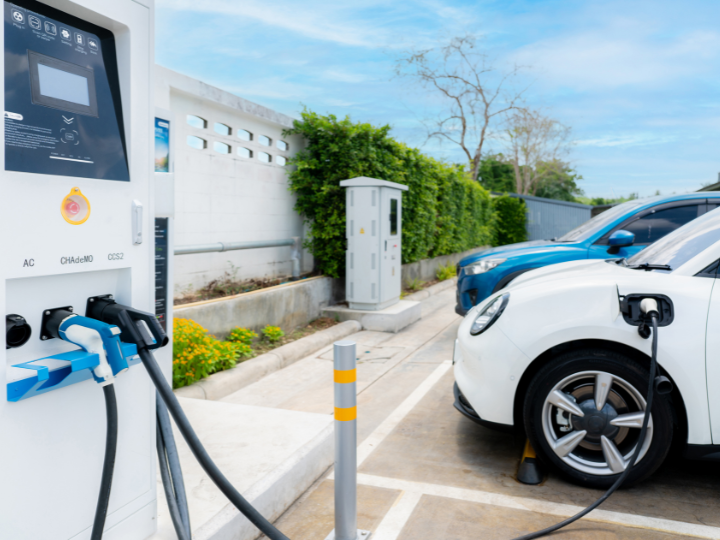Electric Motorcycles: What Is the Hype and Why Are They Going to Become More Common in Ontario?
With electric vehicles becoming more popular, electric motorcycles are no exception. Also occasionally referred to as E-bikes, there is a wide range of types on the market, and each come with their own set of advantages and disadvantages. What is the hype with these vehicles, and why are they becoming so common?
Keep reading for all you need to know about electric motorcycles in Ontario.
What are Electric Motorcycles?
Not to be confused with electric bicycles, electric motorcycles are similar to their electric vehicle counterparts. The main difference between electric motorcycles and traditional gas-powered motorcycles is that they have an electric engine instead of being powered by gasoline. This means that the engine can be re-charged, saving the driver on gas and ultimately saving the Earth from harmful emissions! This is just one significant benefit to using electric motorcycles.
Why Are They Becoming More Common?
In addition to the obvious environmental benefits that electric motorcycles can provide, many people opt to use them for a few other reasons. Firstly, they are more economical than cars or gas-powered motorcycles. You will definitely save money by not taking any trips to the pump, but many governments and entities are also offering special incentive programs to encourage electric vehicle ownership.
Adding to the economic benefit of electric motorcycles is that they are relatively low maintenance. Because they lack things like oil, spark plugs, and air filters, there are fewer parts to maintain or fix if they break.
Secondly, electric motorcycles are small and easy to maneuver, making them convenient commuting vehicles. Because they are smaller than traditional motorcycles, they make less noise and allow drivers to actually listen to music on their drive to and from school or the office. Especially if you live in a busy city like Toronto, where parking may be limited, electric motorcycles are a great alternative to owning a car.
Last but certainly not least, electric motorcycles are just a cool way to get around. Some newer bikes on the market have features not found on other motorcycles. The 150 kW Damon Hypersport, for example, has a safety device called ‘Co-Pilot’ that uses sensors to detect objects within a specific range. If these objects come too close to the motorcycle, vibrations in the handlebars and LED lights in the cockpit will alert the driver. The bike is also built to be more comfortable than other motorcycles, which is a huge plus.
Electric Motorcycle Insurance
Like any other traditional motorcycle, you will need to get insurance on your electric bike. Motorcycle insurance is similar to car insurance in that you can get coverage for liability and for your bike itself.
What Type of Insurance is Required?
The amount of coverage you are required to have will vary by province. In Ontario, drivers must carry third-party liability, which will cover any injuries you cause to another person or damage you may cause to property. The minimum amount required for this coverage is $200,000.
Most provinces will also require you to carry uninsured motorist coverage, which protects you in the event you are hit by someone who does not have insurance or enough insurance, and statutory accident benefits coverage.
Failure to purchase the required insurance will usually result in penalties from the province, in addition to paying out of pocket for any damage that you cause. Therefore, it is imperative that you buy the required amount of insurance at least.
What Optional Coverages Can I Buy?
Beyond the mandatory insurance, you have the option to purchase additional coverage on your electric motorcycle. You can purchase limits higher than the $200,000 required for third-party liability, sometimes even up to $1,000,000 depending on the company. You also have the option of increasing the accident benefits coverage as well.
One of the most critical optional coverages to purchase is the physical damage portion. Physical damage refers to the coverage of your motorcycle itself. This is broken down into two parts: comprehensive and collision. Comprehensive provides coverage for things like fire, theft, vandalism, or hail, while collision will cover your bike if you hit something and are at fault.
Both comprehensive and collision are subject to a deductible, which means that there is an out-of-pocket cost associated with any claims filed. Companies will usually offer deductibles in various amounts, and $100, $250, $500, and $1,000 options are typical. The higher the deductible you choose, the lower the insurance price will be, so it can be an excellent way to save on premiums without sacrificing any coverage.
It is also important to note that while these coverages may not be required by law, they may be required by your financial institution if you have a lease or a loan on your bike. In any case, it is best to check with a licensed professional to be sure you are getting exactly what you need.
Final Thoughts
Because they are so lightweight and they have such tremendous torque and acceleration, electric motorcycles can hit high speeds very quickly. As such, you may have trouble finding a standard insurance carrier to cover them. However, this does not mean you will not be able to insure them. In fact, you will absolutely want to.
With all the fancy safety features and new technology, electric bikes can be expensive, and you would not want to pay out of pocket if something were to happen. So, what can you do? A good insurance broker is a great place to start. They can help you find a company that will insure your motorcycle and make sure you have the proper coverage.
Duliban Insurance Brokers have been in the business for over 40 years and work with numerous companies to get you the insurance you need. Call or email them for a quote today!












